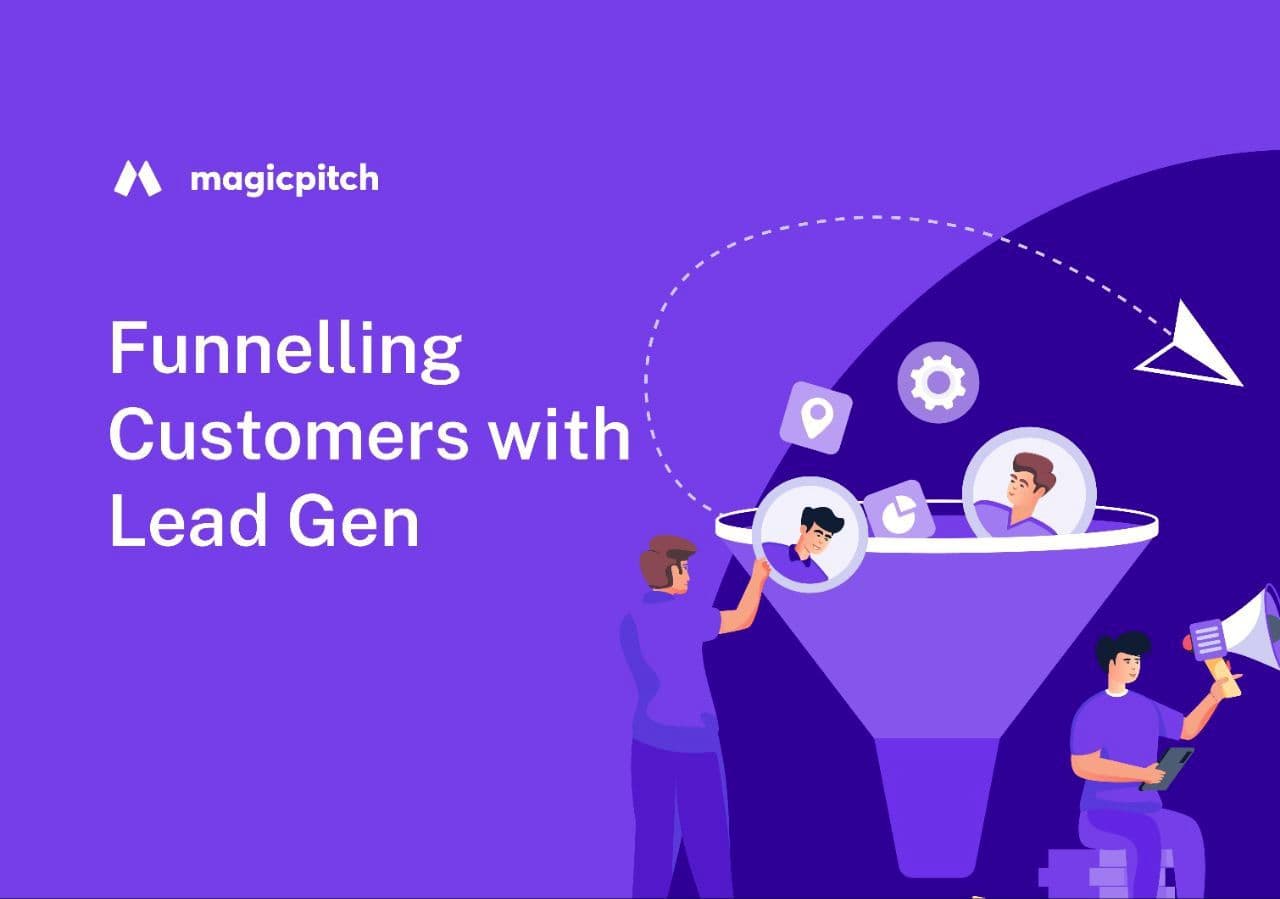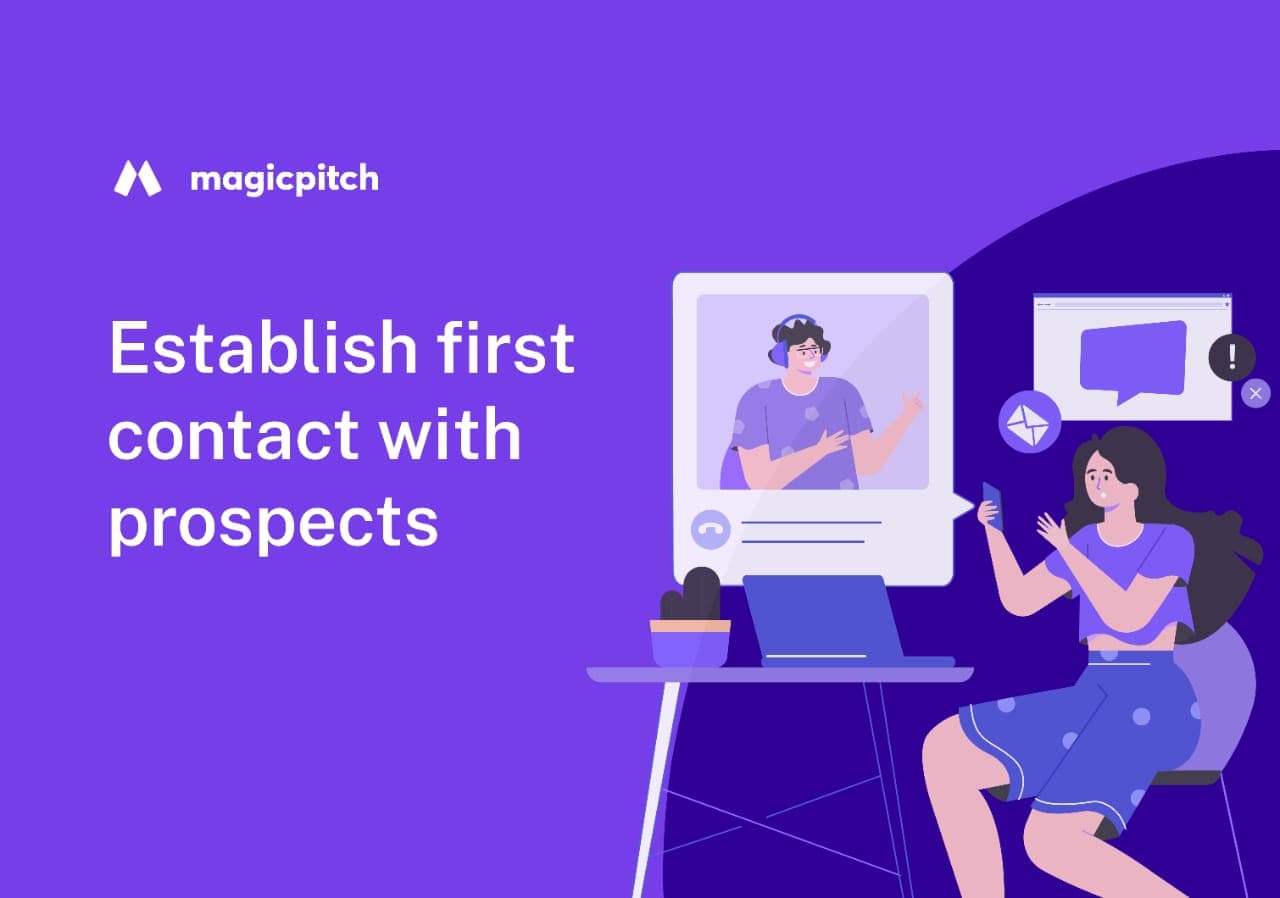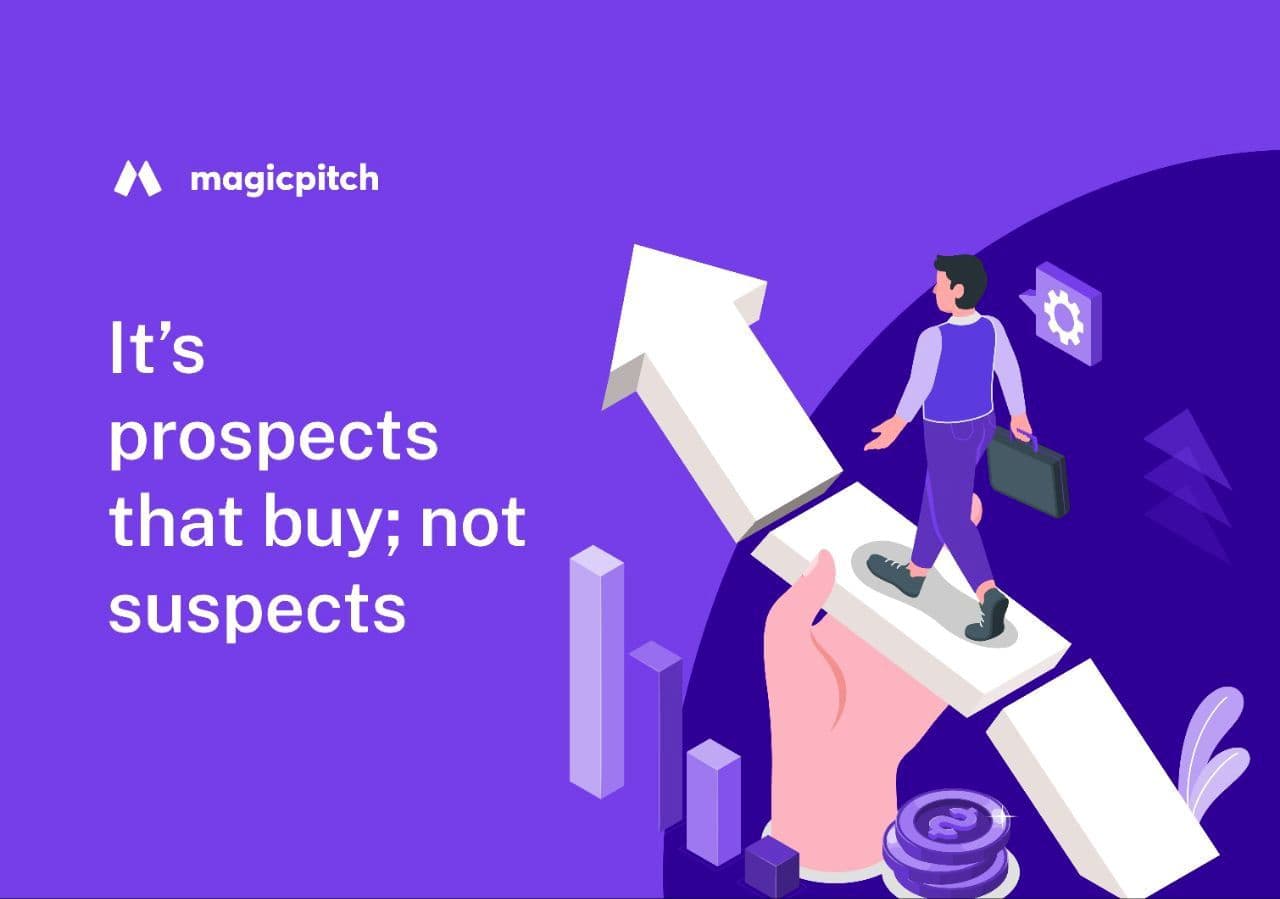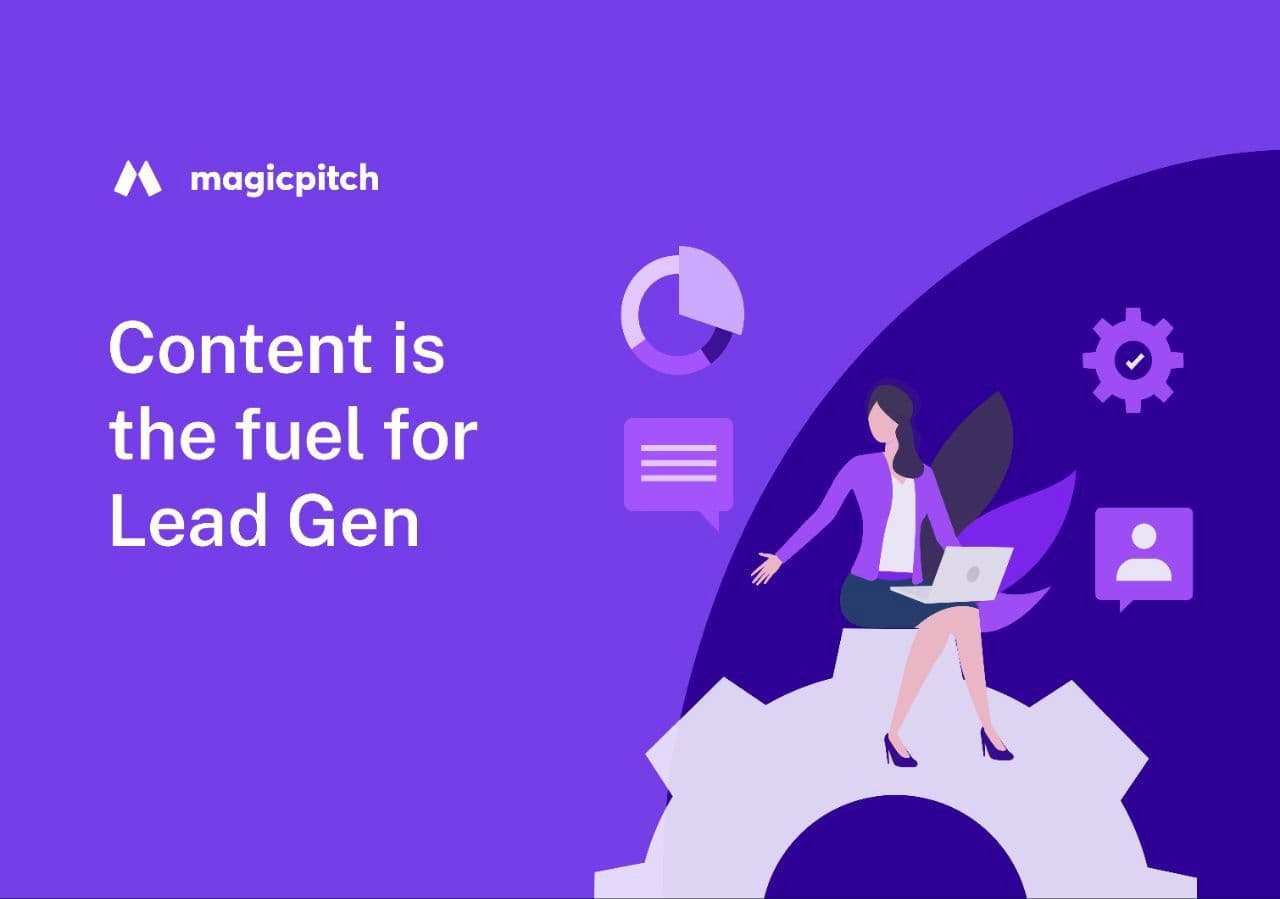Magicpitch | March 19, 2024
10 Min Read

For a business, having an accurate understanding of digital marketing campaigns is a crucial step as it reaches every eye possible, resonates in the target audience’s heart, and generates promotion-worthy ROI.
If we talk about two of the important aspects of any organisation’s marketing plan they are Lead Generation and Sales Prospecting. These two factors determine how well a business can connect and serve its target audience. Businesses having fantastic products/services cannot survive in the long run without the proper support of leads or prospects in their pipeline.
Their aims and methods differ significantly. There are specific situations where one is more effective than the other.
In this article, we’ll look at the differences between sales prospecting vs lead generation and which approach works best when.
Scroll down to find out everything about prospecting vs lead generation
The entire role of marketing is about funnelling people with a need for your product into your sales pipeline. Lead generation is the process of pre-qualifying these customers, and then moving them into the sales funnel.
These leads are passed on to sales teams, reps, or consultants to follow up and close deals. Lead generation is often automated via online advertising, email campaigns, social media marketing, or even live chat outsourcing and more. The defining factor of a leader is that the customer has expressed an interest in your business. This could be by visiting a webpage, filling in a contact form, responding to a marketing email, and so on.
Organisations on average generate 1,877 leads per month. This is another data point with significant variation depending on factors like company size and industry. Businesses allocate a significant portion of their marketing budget to lead generation, with an average of 53% dedicated to this area.

Example: Lead Generation
Let’s look at a common scenario to see how a lead generation strategy comes together. Imagine your business manages servers for B2B clients.
On your blog, you post a thought leadership article about the difference between cloud hosting options. Then, that page links to a downloadable whitepaper on cloud-based systems. To download, the customer has to register their email address.
That email address is now a qualified lead. Not only did they read the article, but they also wanted to know more about the cloud-hosted servers you manage. Of course, that article would also contain links to product or service pages, giving customers a direct way into your pipeline. This shows that Lead Gen has many moving parts.
Benefits with Lead Generation:

Sales prospecting is all about defining the characteristics that make someone likely to have a need for your product.
These can be either very broad definitions or more narrow customer niches.
There are some general questions you can ask to start narrowing down potential customers. In the B2B scenario above, you might ask “Is the prospect a decision-maker?” Then you could narrow it down further by asking “Does the prospect have pain points that our service can solve?”
The more you narrow down the list, the more likely you can convert that prospect. Of course, to get more granular detail you’ll need more in-depth market research. Remember that prospects haven’t shown any interest in your business, so you’ll be making first contact.
This makes the process of prospecting much more hands-on than lead generation. You need a sales rep or advisor to make contact and develop a business relationship with the prospect. Then, they need to nurture that prospect through the buyer’s journey to conversion.
This will require multiple conversations, meetings, product demonstrations, etc. It’s not a one-size-fits-all approach, so you can’t rely on automation for the most part. Technology can still be helpful but having reps who know how to start a relationship is key.
The types of B2B prospecting activities that sales reps engage in include:
It’s called prospecting because it’s a little bit like panning for gold. If you’re cold-calling, you’re sifting through rejections to get to the “gold nuggets” that are your viable customers. There’s often a low conversion rate for prospecting tactics like cold-calling & emailing. The average response rate for cold emails is around 1-3%. This means a large portion of your outreach efforts might not receive a direct response. However, a well-crafted email with a strong value proposition can still generate leads. And studies suggest that salespeople spend an average of around 33% of their time prospecting for new leads [Salesforce]. This highlights the significant time commitment required for building a strong sales pipeline.

Example:
Prospecting is used by sales reps and consultants to establish first contact with customers in both B2B and B2C scenarios. For example, if a consultant starts a social media conversation with another business and then arranges a follow-up meeting, that’s successful prospecting. Utilising effective cold emailing software streamlines the initial outreach process, allowing sales teams to personalise communication at scale and enhance prospecting efficiency significantly.
Benefits with Prospecting:

The short answer is no!
The terms “Leads” and “Prospects” are commonly and interchangeably used sometimes while claiming sales and marketing efforts. But just like marketing and sales work better when aligned, it only makes sense to generate leads when these people can potentially become the business’s prospects.
Let’s look at these terminologies in a differentiating way and find the situational utility of sales and prospecting.
Here are some ideas to smoothly start the process of sales prospecting for a business:

The following can be some steps to look into by a business for proper lead gen flow:

According to published data, 87% of sales and marketing professionals believe that when sales and marketing work collaboratively, it leads to business growth. Both lead generation and sales prospecting contribute to one and only business goal – driving sales.
And the truth is, whether you see the difference between these two processes or use the terms interchangeably, making your sales and marketing move together towards one goal is the most critical part of growing your business.
Realted Blog Post:
Ans. Importantly, prospecting is the first step in the sales process whereas lead gen is completely related to marketing campaigns.
Ans. Once the business qualifies a lead, it becomes a prospect and moves to the next stage of the sales funnel.
Ans. It helps the business to build a sales pipeline and brings it closer to closing deals and guaranteeing new customers.
Ans. Finding the right audience is one of the difficulties with lead generation.
Ans. Methods like cold -calling, Linkedin, Networking, Advertising, Trade shows, etc, are some ways of approaching these two techniques.